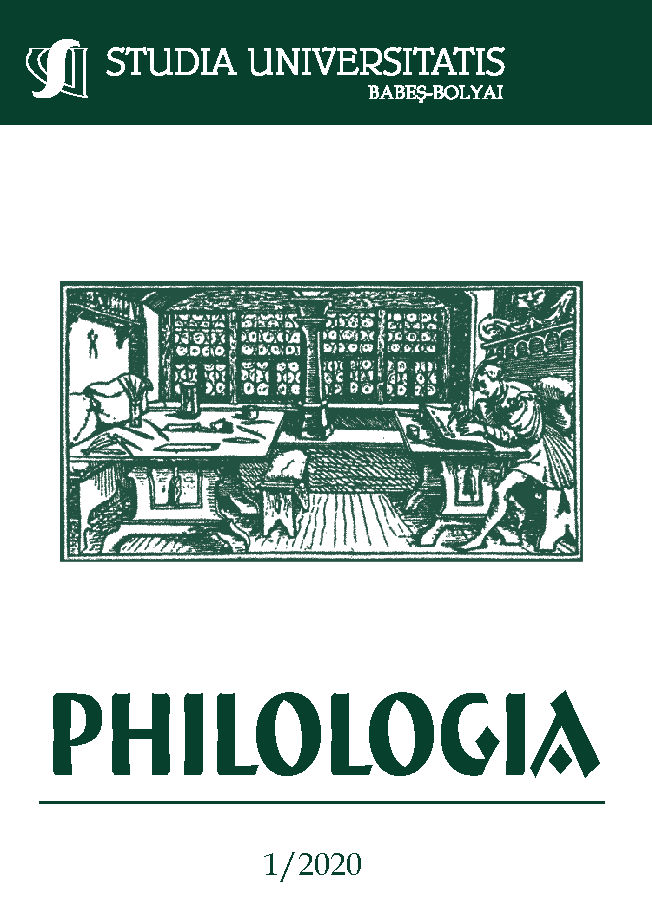“CUTENESS” (“KAWAII”) AS “MYTH” IN JAPANESE ADVERTISING DISCOURSE
DOI:
https://doi.org/10.24193/subbphilo.2020.1.03Keywords:
advertising discourse, cultural semiotics, advertising language, kawaii, pop culture, culture as social interaction, mythAbstract
Cuteness (kawaii) as myth in Japanese advertising discourse. In the present article we intend to explore the values of “cute” as social and cultural artefact depicted in Japanese print advertisements. Like any other discourse, advertising has as a starting point that corresponds to the form, which, in relation to a certain historical framework, will give birth to the myth. For example, the “consumer” of myths found in advertising is not captivated by the signs per se, but by the ideas they invoke. Based on this statement, we expose the concept of “cute” (kawaii) as myth of Japanese daily life, serving as (perhaps) the most efficient tool for preserving group harmony (wa) and for persuading the receiver. By focusing on the implications and historical roots of the concept in Japanese society, this paper aims to reveal the “hidden meaning” behind the ubiquitous “cute”. The analyzed corpus consists of three non-commercial print adverts created between 2016-2017 for Keio Corporation and Tokyo Metro, two major Japanese transportation operators. The idea of ‘cuteness’ is perceived by the Japanese as a “time capsule” for it can postpone adulthood responsibilities and prolong childhood innocence. In the context of globalization, kawaii has become a totem which continues the centuries-old myth (in the traditional sense) of uniqueness of the Japanese.
Rezumat. „Drăgălășenia” (kawaii) ca mit în discursul publicitar japonez. În prezentul articol intenționăm să explorăm valorile „drăgălășeniei” (kawaii) ca artefact social și cultural prezent în afișele publicitare japoneze. Precum orice tip de discurs, publicitatea are un punct de plecare care corespunde formei, și care, în raport cu un anumit cadru istoric, va da naștere mitului. Spre exemplu, „consumatorul” miturilor găsite în publicitate nu este captivat de semnele în sine, ci de ideile pe care le invocă. Pe baza acestei afirmații, explorăm valențele conceptului „drăguț” (kawaii) ca mit al vieții cotidiene japoneze, servind ca (poate) cel mai eficient instrument de păstrare a armoniei grupului (wa) și de persuadare a receptorului. Concentrându-se pe implicațiile și rădăcinile istorice ale conceptului în societatea japoneză, studiul propune dezvăluirea „sensului ascuns” din spatele omniprezentului „drăguț”. Corpusul analizat constă din trei afișe cu caracter necomercial, create în perioada 2016-2017 pentru Keio Corporation și Tokyo Metro, doi operatori de transport japonezi majori. Ideea de „drăgălășenie” este percepută de către japonezi ca o „capsulă a timpului” deoarece poate amâna asumarea responsabilităților și prelungirea inocenței copilăriei. În contextul globalizării, kawaii a devenit un totem care continuă mitul (în sensul tradițional) unicității poporului nipon.
Cuvinte-cheie: discurs publicitar, semiotică culturală, limbaj publicistic, kawaii, cultură pop, cultura ca interacțiune socială, mit.
References
Barthes, Roland. 1991 [1972]. Mythologies. New York: Noonday Press.
Chandler, Daniel. 2001. Semiotics: The Basics. New York: Routledge.
Dale, Joshua Paul. 2016. “Cute studies: An emerging field”. In East Asian Journal of Popular Culture, 2: 1, 5–13. Intellect Ltd. Editorial.
Frenţiu, Rodica. 2014. “National and Cultural Identity: Mythologising Artefact in Japanese Mass Media” („Identitate culturală şi naţională: artefact mitologizant în mass-media japoneză”). In Globalization and intercultural dialogue : multidisciplinary perspectives, ed. Iulian Boldea, 33-44. Târgu-Mureş : Arhipelag XXI.
Frenţiu, Rodica. 2014. “The “Self-Shaping” of Culture and its Ideological Resonance: The Complicity of Ethos and Pathos in the Japanese Advertising Discourse”. In Journal for the Study of Religions and Ideologies, vol. 13, nr. 39, 91-116.
Kinsella, Sharon. 1995. “Cuties in Japan”. In Women, Media and Consumption in Japan, eds. Lise Skov; Brian Moeran, 220-254. Honolulu: University of Hawai’i Press.
Lee, Seung-Hwan. 2018. “Confucianism as an Antidote for the Liberal Self-Centeredness: A Dialogue between Confucianism and Liberalism”. In Confucianisms for a Changing World Cultural Order, eds. Roger T. Ames; Peter, D., Hershock, 29-43. Honolulu: University of Hawai’i Press.
Marcus, Aaron et. al. 2017. Cuteness Engineering: Designing Adorable Products and Services. Cham: Springer International Publishing AG.
McVeigh, Brian. 2000. Wearing Ideology: State, Schooling and Self-Presentation in Japan. Oxford: Berg Press.
Miller, Laura. 2018. “Searching for Charisma Queen Himiko”. In Diva Nation: Female Icons from Japanese Cultural History, ed. Laura Miller; Rebecca Copeland, 51-77. Oakland: University of California Press.
Mizoguchi, Koji. 2013. The Archeology of Japan. New York: Cambridge University Press.
Pellitteri, Marco, Bouissou, Jean-Marie. 1974. The Dragon and the Dazzle. Models, Strategies, and Identities of Japanese Imagination-A European Perspective. Latina: Tunue.
Sei, Shōnagon. 1977. The Pillow Book (枕草子選釈), eds. Satoshi Matsuo; Kazuko Nagai. Tokyo: Musashino Shoin.
Sei, Shōnagon. 2006. The Pillow Book, ed. Meredith McKinney. New York: Penguin Classics.
Shinmura, Izuru. 1991. Kōjien (4th ed). Tokyo: Iwanami-shoten.
Yano, Christine R. 2013. Pink Globalization: Hello Kitty’s Trek Across the Pacific. Durham & London: Duke University Press.
Oxford English Dictionary 2010, http://www.oed.com/.www.oed.com/, accessed 15 January 2020.
McGray, Douglas. 2009. “Japan’s Gross National Cool”. In Foreign Policy Journal, https://foreignpolicy.com/2009/11/11/japans-gross-national-cool/, accessed 19 January 2020.
Robinson, Andrew. 2011. “An A to Z of Theory Roland Barthes’s Mythologies: A Critical Theory of Myths”. In Ceasfire Magazine, https://ceasefiremagazine.co.uk/in-theory-barthes-2/, accessed 19 January 2020.
“Japanese Language Education Communication. Let's think about Words from Japanese. Part 2” (Nihongo Kyōiku tsūshin Nihongo kara kotoba wo kangaeyō Dai 2 kai) 日本語教育通信 日本語からことばを考えよう 第2回, https://www.jpf.go.jp/j/project/japanese/teach/tsushin/language/201912.html?fbclid=IwAR0hKX4ghsSx_ItuKMNJiU9Y_MG36olpyTk8pyH4Fo_CKyxKwZvBoV0FdEE, accessed 19 January 2020.
Social Research Glossary, http://www.qualitative-research.net/index.php/fqs/article/view/1242/2688, accessed 19 January 2020.
Downloads
Published
How to Cite
Issue
Section
License
Copyright (c) 2020 Studia Universitatis Babeș-Bolyai Philologia

This work is licensed under a Creative Commons Attribution-NonCommercial-NoDerivatives 4.0 International License.





 ©Studia Universitatis Babeş-Bolyai Philologia. Published by Babeș-Bolyai University.
©Studia Universitatis Babeş-Bolyai Philologia. Published by Babeș-Bolyai University.